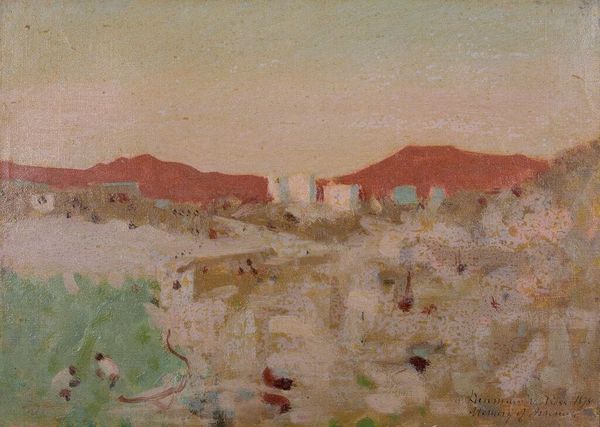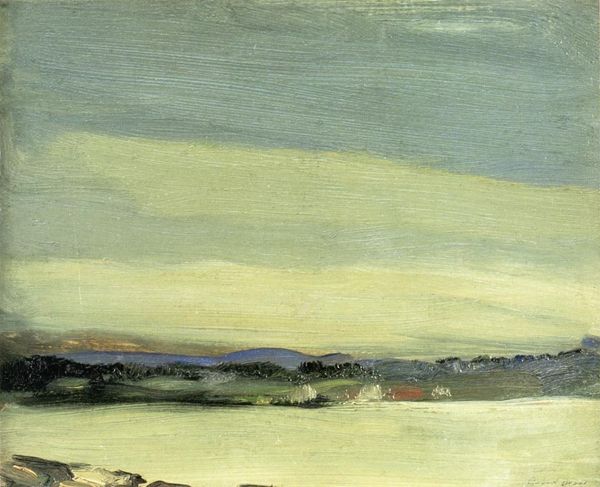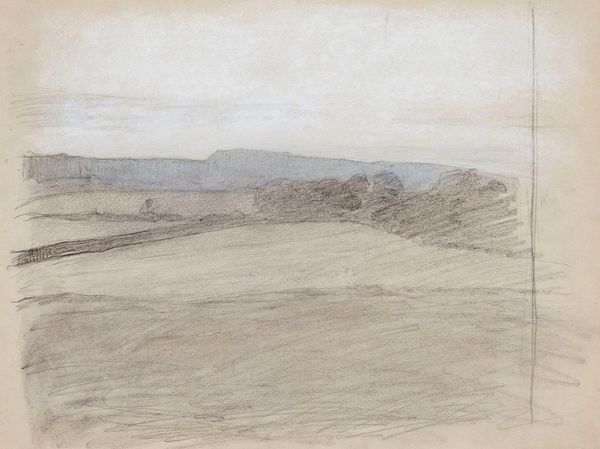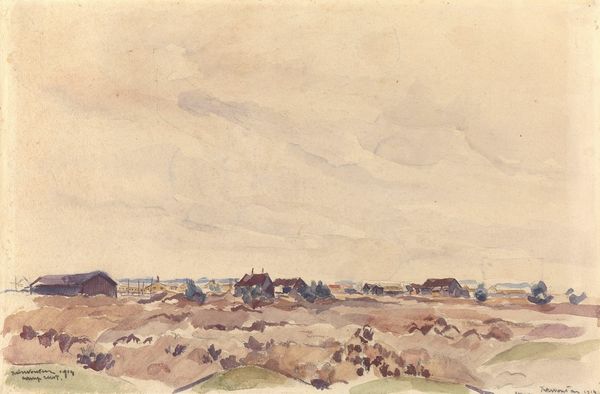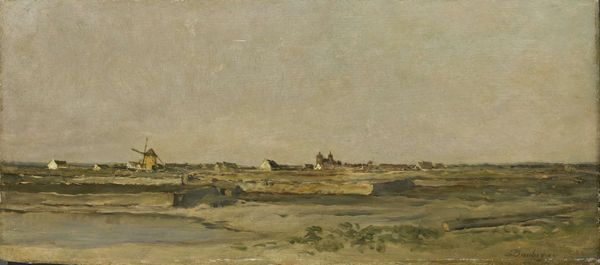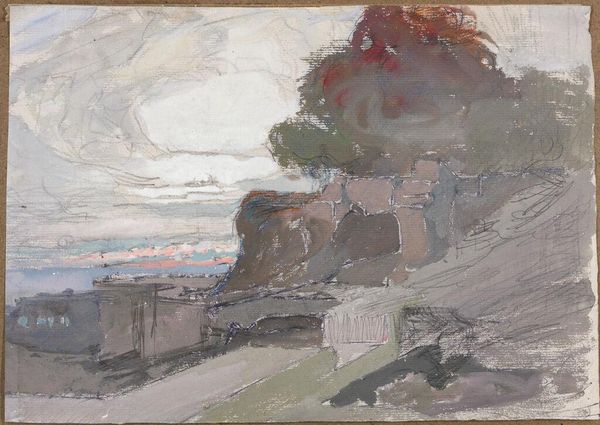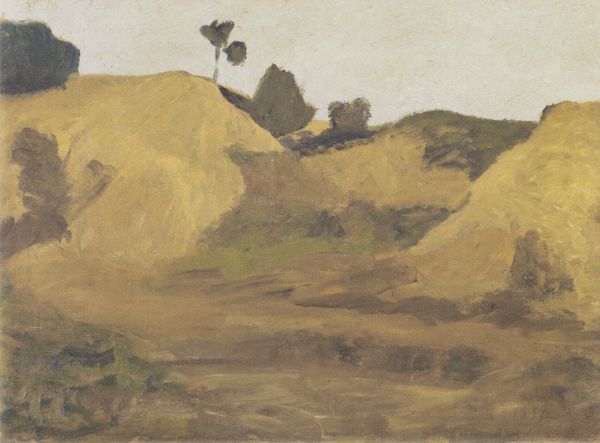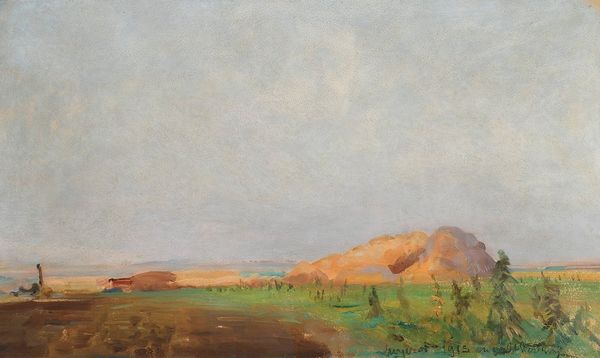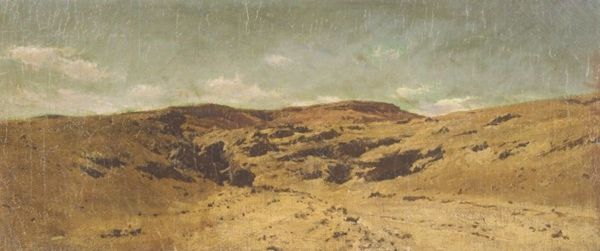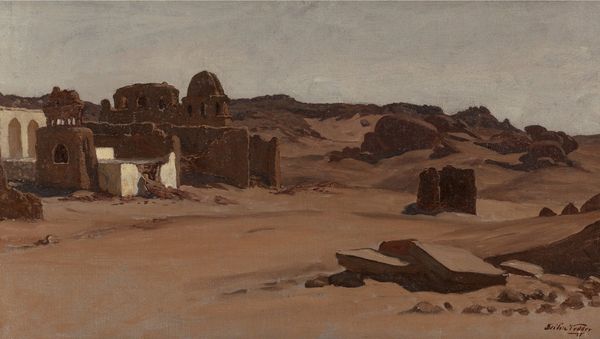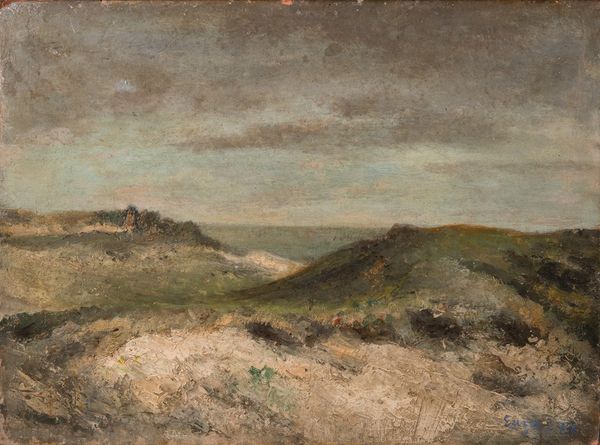
Copyright: Public domain
Curator: Before us hangs "Arab Houses," an oil painting crafted by Mariano Fortuny Marsal in 1871, a work imbued with the spirit of Orientalism. Editor: My initial impression is one of bleached sunlight and quiet observation. It’s not photorealistic, more like a quickly rendered study. Curator: The artist captures the architecture, perhaps in North Africa, utilizing oil paints in an impasto technique, hinting at the textures and materials that make up these buildings. Editor: I find myself wondering about the specific materials Fortuny employed. Was he experimenting with different oil paint formulations to achieve those sun-drenched hues? I am eager to examine his methods and techniques that lend such materiality to these built forms. Curator: His work, indeed, fits into the Orientalist aesthetic, which has received criticism for perpetuating exoticized and often inaccurate representations of non-Western cultures. This, too, plays an essential role in analyzing the image's reception, especially today. Editor: Absolutely. Consider, too, how the "Orientalist" tag itself commodifies cultures. I am compelled to delve into the supply chains of paint during that era and ask critical questions about what, or whom, Fortuny's landscapes and buildings served. How might such economic drivers have shaped artistic expression? Curator: This intersection—the painting’s materiality coupled with its reflection of complex socio-historical narratives—creates an intersectional view we must always unpack in relation to these types of artistic trends and approaches. It's necessary to assess how colonial ideology played into it. Editor: Agreed. Focusing on how such art was produced can also help us challenge some highbrow assumptions surrounding what constitutes so-called “fine art.” What sort of work and what labor were used in such artworks to get us here today? What labor practices were at play during its execution and initial audience viewing? Curator: Understanding Fortuny’s world – the culture and political context – and coupling this understanding with the image he captured allows viewers a fresh interpretation of this scene that, even if unintentionally, encapsulates the historical complexity present in this moment. Editor: For me, examining the means of artistic creation provides an entry point for challenging conventional definitions of artistic genius and reframing how value is given in a market so quick to forget who helped cultivate this. Curator: It has made me consider how important it is to recognize an image's role in a much broader political moment. Editor: Likewise, investigating its production draws me to consider how an artwork shapes historical conversations surrounding power dynamics in labor and access to expression and privilege.
Comments
No comments
Be the first to comment and join the conversation on the ultimate creative platform.
